Calculation and Analysis of Wind Turbine Health Monitoring Indicators Based on the Relationships with SCADA Data
Abstract
:1. Introduction
2. Materials and Methods
2.1. Data Relationship Modeling of the Wind Turbine Operating State
2.1.1. Data Analysis
2.1.2. Sliding Window Model
2.1.3. Data Bin Processing
2.1.4. Data Relationship Modeling
2.2. Health Index of Wind Turbine Operating State
2.2.1. Health Indicators Based on Data Relations
2.2.2. Discussion on Health Indicators of Wind Turbine Operation
2.2.3. Proposed Health Indicators for Wind Turbine Operating State
3. Results
3.1. Effect of Window Width on Health Indicators
3.2. Impact of Window Increment on Health Indicators
3.3. Effect of Data Sampling Period on Health Indicators
3.4. Impact of Data Relationship Modeling on Health Indicators
4. Discussion
5. Conclusions
Author Contributions
Funding
Conflicts of Interest
References
- IRENA. Renewable Energy Statistics 2019; The International Renewable Energy Agency: Abu Dhabi, UAE, 2019. [Google Scholar]
- Yang, W.; Tavner, P.J.; Crabtree, C.J.; Feng, Y.; Qiu, Y. Wind turbine condition monitoring: Technical and commercial challenges. Wind Energy 2014, 17, 673–693. [Google Scholar] [CrossRef] [Green Version]
- Zhang, P.; Lu, D. A Survey of Condition Monitoring and Fault Diagnosis toward Integrated O&M for Wind Turbines. Energies 2019, 12, 2801. [Google Scholar]
- Liu, Z.; Zhang, L. A review of failure modes, condition monitoring and fault diagnosis methods for large-scale wind turbine bearings. Measurement 2019, 149, 107002. [Google Scholar] [CrossRef]
- Artigao, E.; Martín-Martínez, S.; Honrubia-Escribano, A.; Gómez-Lázaro, E. Wind turbine reliability: A comprehensive review towards effective condition monitoring development. Appl. Energy 2018, 228, 1569–1583. [Google Scholar] [CrossRef]
- Stetco, A.; Dinmohammadi, F.; Zhao, X.; Robu, V.; Flynn, D.; Barnes, M.; Keane, J.; Nenadic, G. Machine learning methods for wind turbine condition monitoring: A review. Renew. Energy 2019, 133, 620–635. [Google Scholar] [CrossRef]
- Kusiak, A.; Li, W. The prediction and diagnosis of wind turbine faults. Renew. Energy 2011, 36, 16–23. [Google Scholar] [CrossRef]
- Zhang, Z.; Kusiak, A. Monitoring wind turbine vibration based on SCADA data. ASME J. Solar Energy Eng. 2012, 134, 021004. [Google Scholar] [CrossRef]
- Feng, Y.; Qiu, Y.; Crabtree, C.J.; Long, H.; Tavner, P.J. Use of SCADA and CMS signals for failure detection and diagnosis of a wind turbine gearbox. In Proceedings of the European Wind Energy Conference and Exhibition EWEA, Brussels, Belgium, 14–17 March 2011. [Google Scholar]
- Kim, K.; Parthasarathy, G.; Uluyol, O.; Foslien, W.; Sheng, S.; Fleming, P. Use of SCADA data for failure detection in wind turbines. In Proceedings of the ASME 2011 5th International Conference on Energy Sustainability 2011, Washington, DC, USA, 7–10 August 2011; American Society of Mechanical Engineers: New York, NY, USA; pp. 2071–2079. [Google Scholar]
- Yongjie, Z.; Dongfeng, W.; Junying, Z.; Yuejiao, H. Research on early fault diagnostic method of wind turbines. Telkomnika Indones. J. Eng. 2013, 11, 2330–2341. [Google Scholar] [CrossRef]
- Yang, W.; Court, R.; Jiang, J. Wind turbine condition monitoring by the approach of SCADA data analysis. Renew. Energy 2013, 53, 365–376. [Google Scholar] [CrossRef]
- Gill, S.; Stephen, B.; Galloway, S. Wind turbine condition assessment through power curve copula modeling. IEEE Trans. Sustain. Energy 2012, 3, 94–101. [Google Scholar] [CrossRef] [Green Version]
- Kusiak, A.; Verma, A. Monitoring wind farms with performance curves. IEEE Trans. Sustain. Energy 2013, 4, 192–199. [Google Scholar] [CrossRef]
- Yan, Y.; Li, J.; Gao, D.W. Condition parameter modeling for anomaly detection in wind turbines. Energies 2014, 7, 3104–3120. [Google Scholar] [CrossRef] [Green Version]
- Zhu, Y.; Zhu, C.; Song, C.; Li, Y.; Chen, X.; Yong, B. Improvement of reliability and wind power generation based on wind turbine real-time condition assessment. Int. J. Electr. Power Energy Syst. 2019, 113, 344–354. [Google Scholar] [CrossRef]
- Zaher, A.S.A.E.; McArthur, S.D.J.; Infield, D.G.; Patel, Y. Online wind turbine fault detection through automated SCADA data analysis. Wind Energy 2009, 12, 574–593. [Google Scholar] [CrossRef]
- Schlechtingen, M.; Santos, I.F.; Achiche, S. Wind turbine condition monitoring based on SCADA data using normal behavior models. Part 1: System description. Appl. Soft Comput. 2013, 13, 259–270. [Google Scholar] [CrossRef]
- Li, J.; Lei, X.; Li, H.; Ran, L. Normal behavior models for the condition assessment of wind turbine generator systems. Electr. Power Compon. Syst. 2014, 42, 1201–1212. [Google Scholar] [CrossRef]
- Ren, H.; Liu, W.; Shan, M.; Wang, X. A new wind turbine health condition monitoring method based on VMD-MPE and feature-based transfer learning. Measurement 2019, 148, 106906. [Google Scholar] [CrossRef]
- Dai, J.; Liu, D.; Wen, L.; Long, X. Research on power coefficient of wind turbines based on SCADA data. Renew. Energy 2016, 86, 206–215. [Google Scholar] [CrossRef]
- Calif, R.; François, G.; Schmitt, F. The Scaling Properties of the Turbulent Wind Using Empirical Mode Decomposition and Arbitrary Order Hilbert Spectral Analysis. In Wind Energy-Impact of Turbulence; Springer: Berlin/Heidelberg, Germany, 2014; pp. 43–49. [Google Scholar]
- Calif, R.; Schmitt, F. Multiscaling and joint multiscaling of the atmospheric wind speed and the aggregate power output from a wind farm. Nonlinear Process. Geophys. 2014, 21, 379–392. [Google Scholar] [CrossRef] [Green Version]
- IEC 61400-12-1. Wind Turbines Part 12-1: Power Performance Measurements of Electricity Producing Wind Turbines; IEC: Geneva, Switzerland, 2005. [Google Scholar]
- Tony, B.; Nick, J.; David, S.; Ervin, B. Wind Energy Hand-Book; John Wiley & Sons Ltd.: New York, NY, USA, 2005. [Google Scholar]
- Zhang, F.; Liu, D.S.; Dai, J.C.; Wang, C.; Shen, X.B. An Operating Condition Recognition Method of Wind Turbine Based on SCADA Parameter Relations. J. Mech. Eng. 2019, 55, 1–9. (In Chinese) [Google Scholar] [CrossRef]


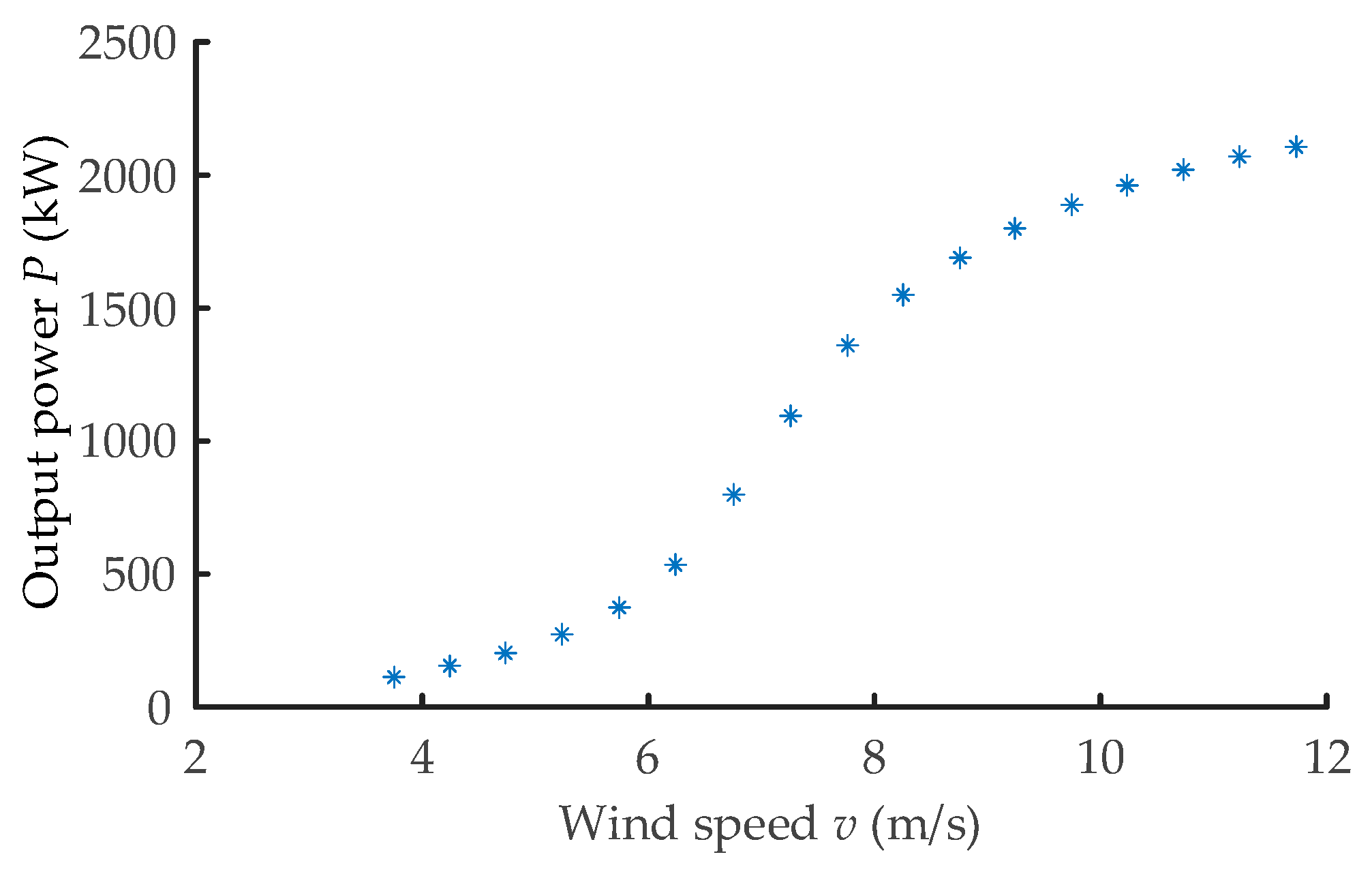
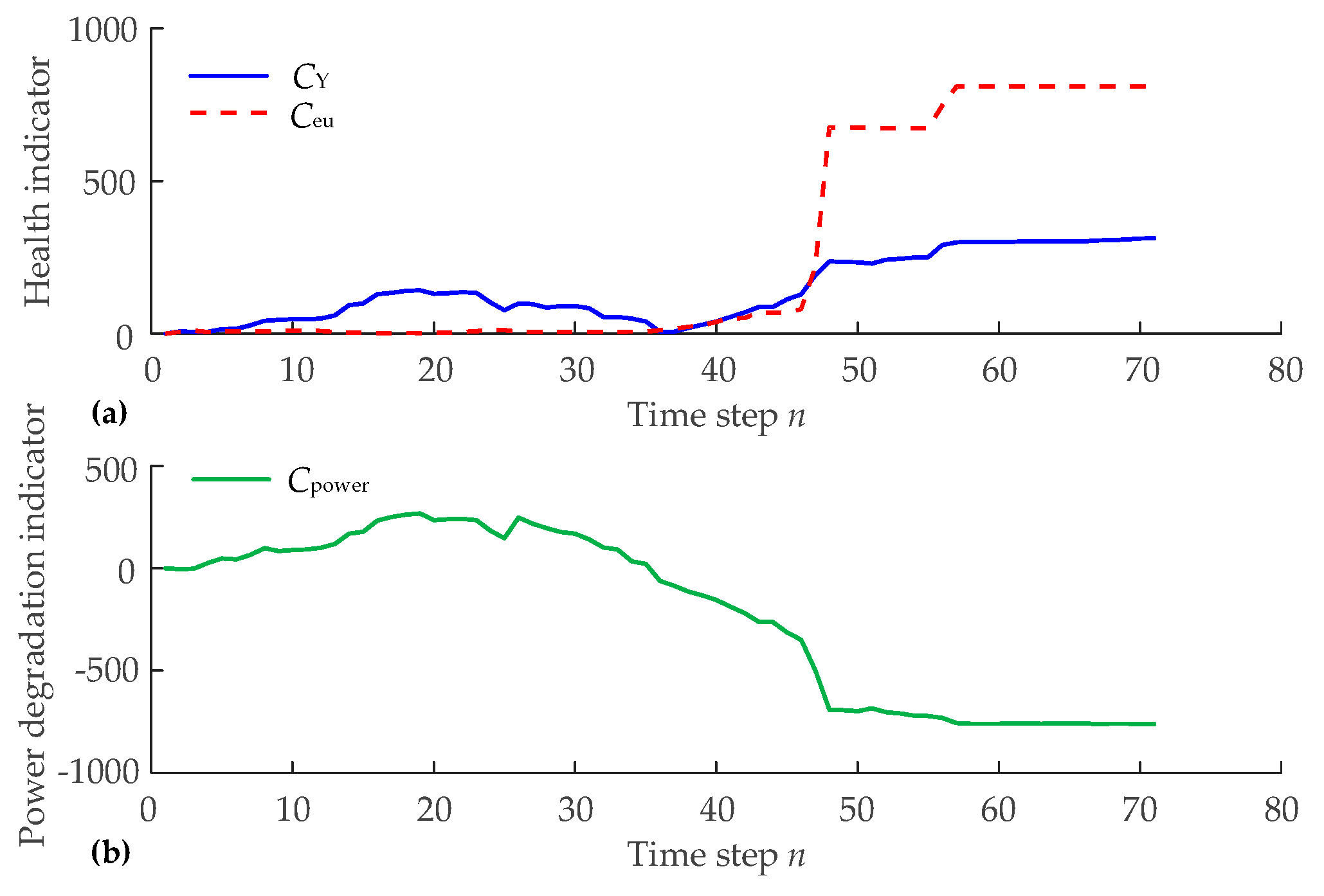
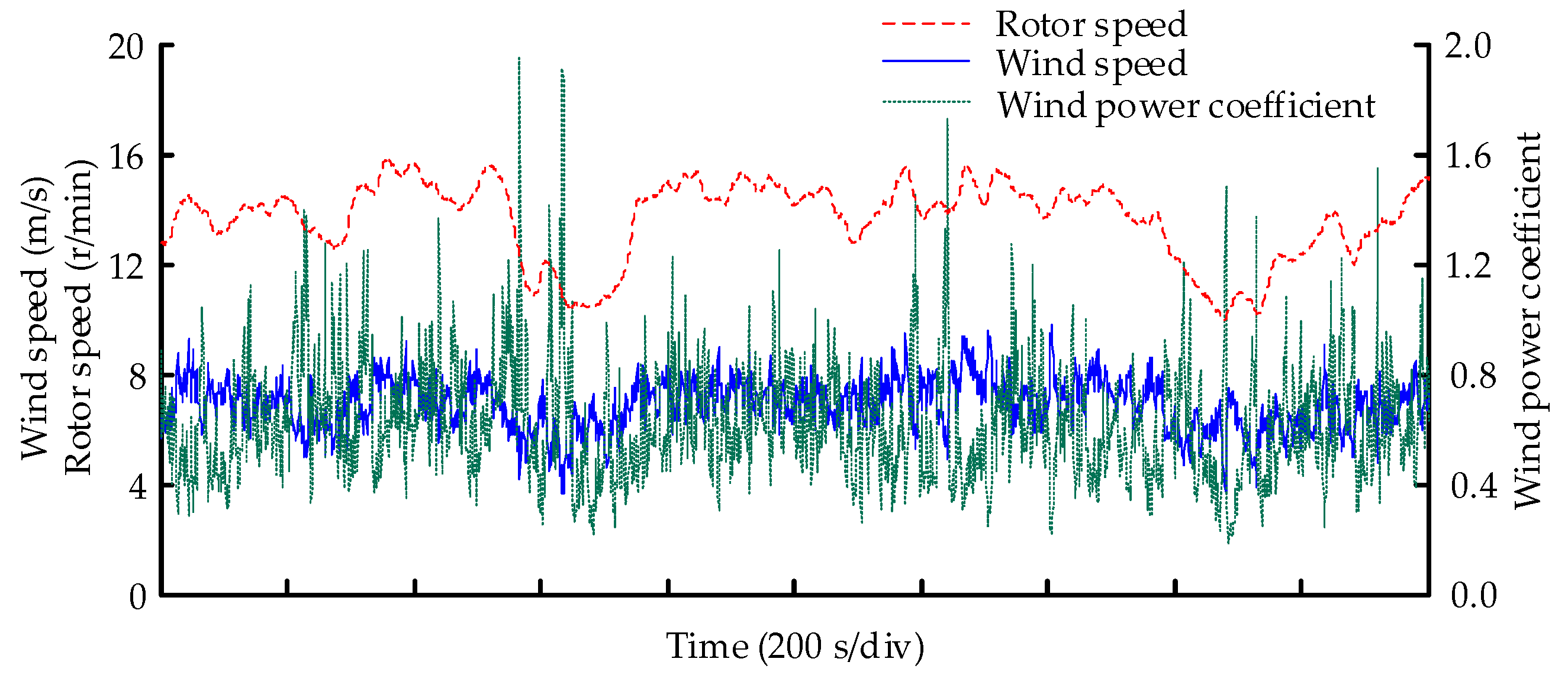
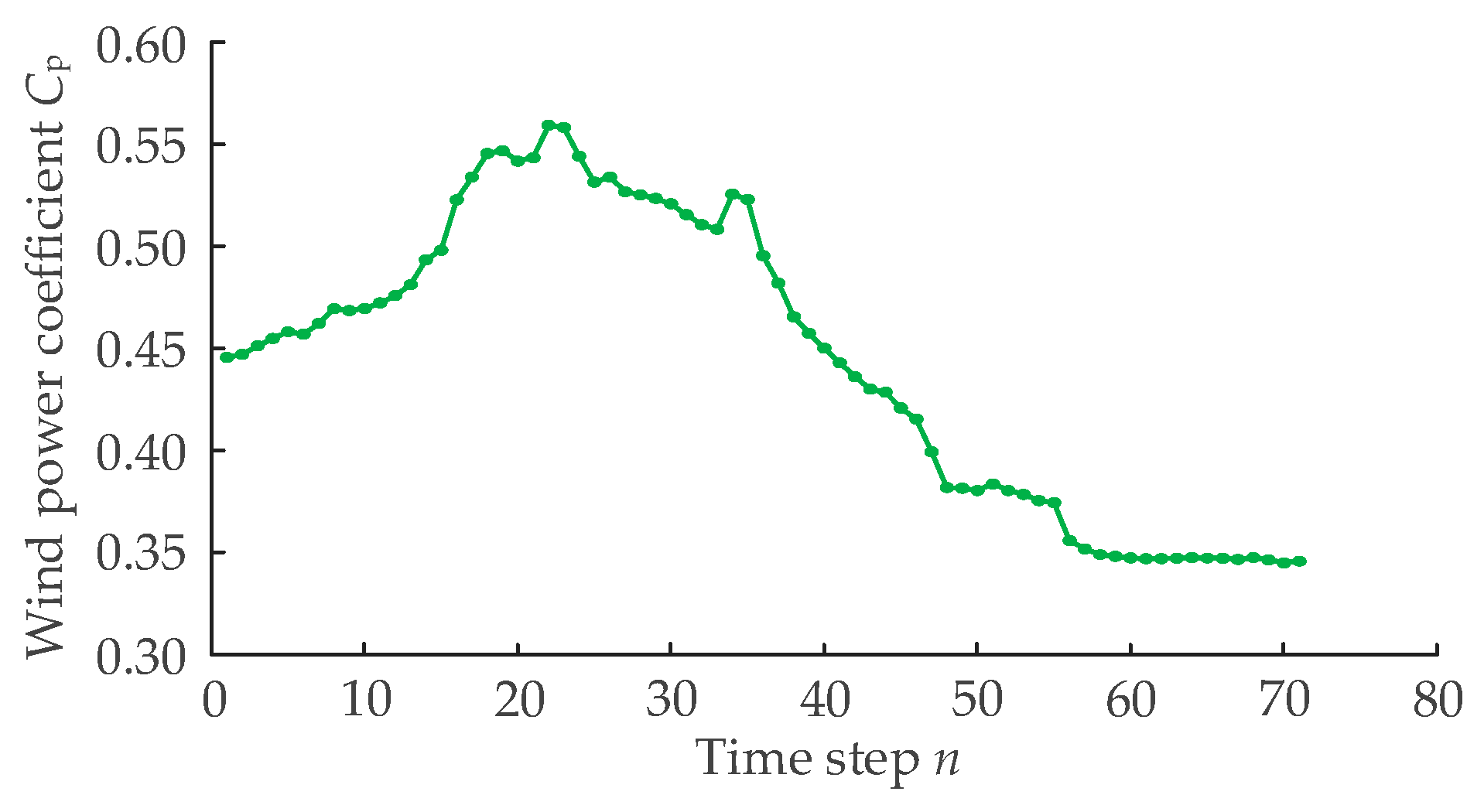


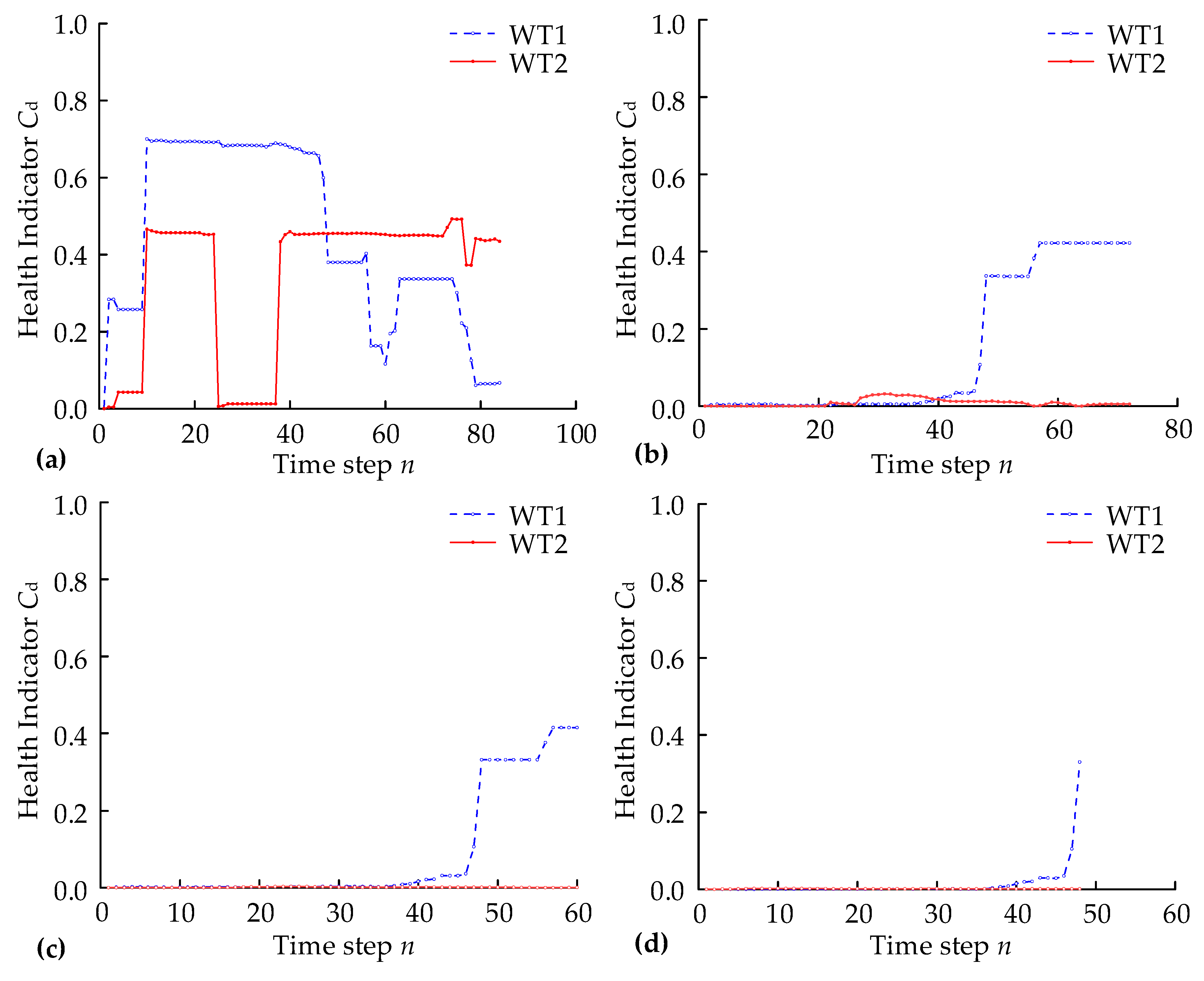
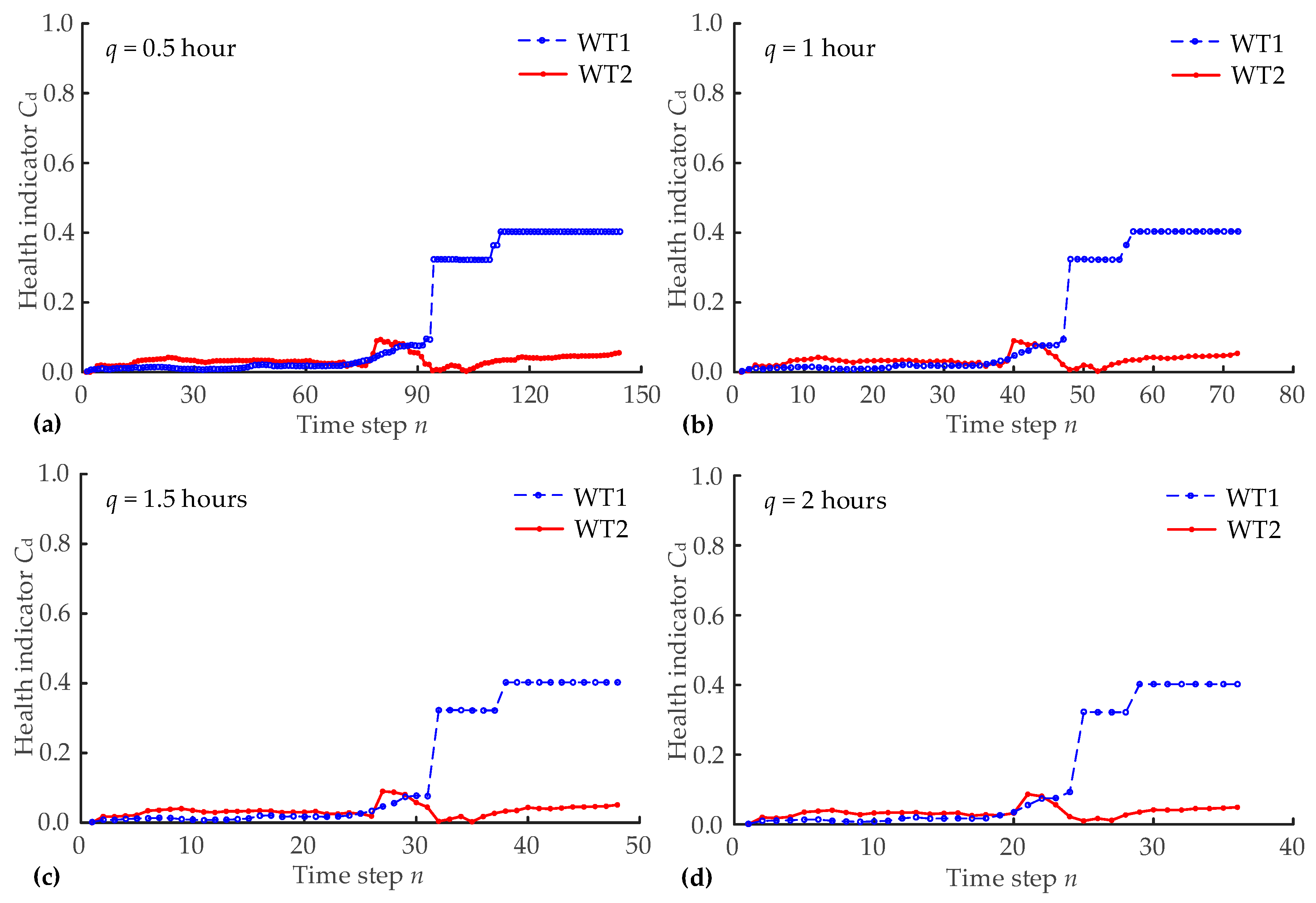
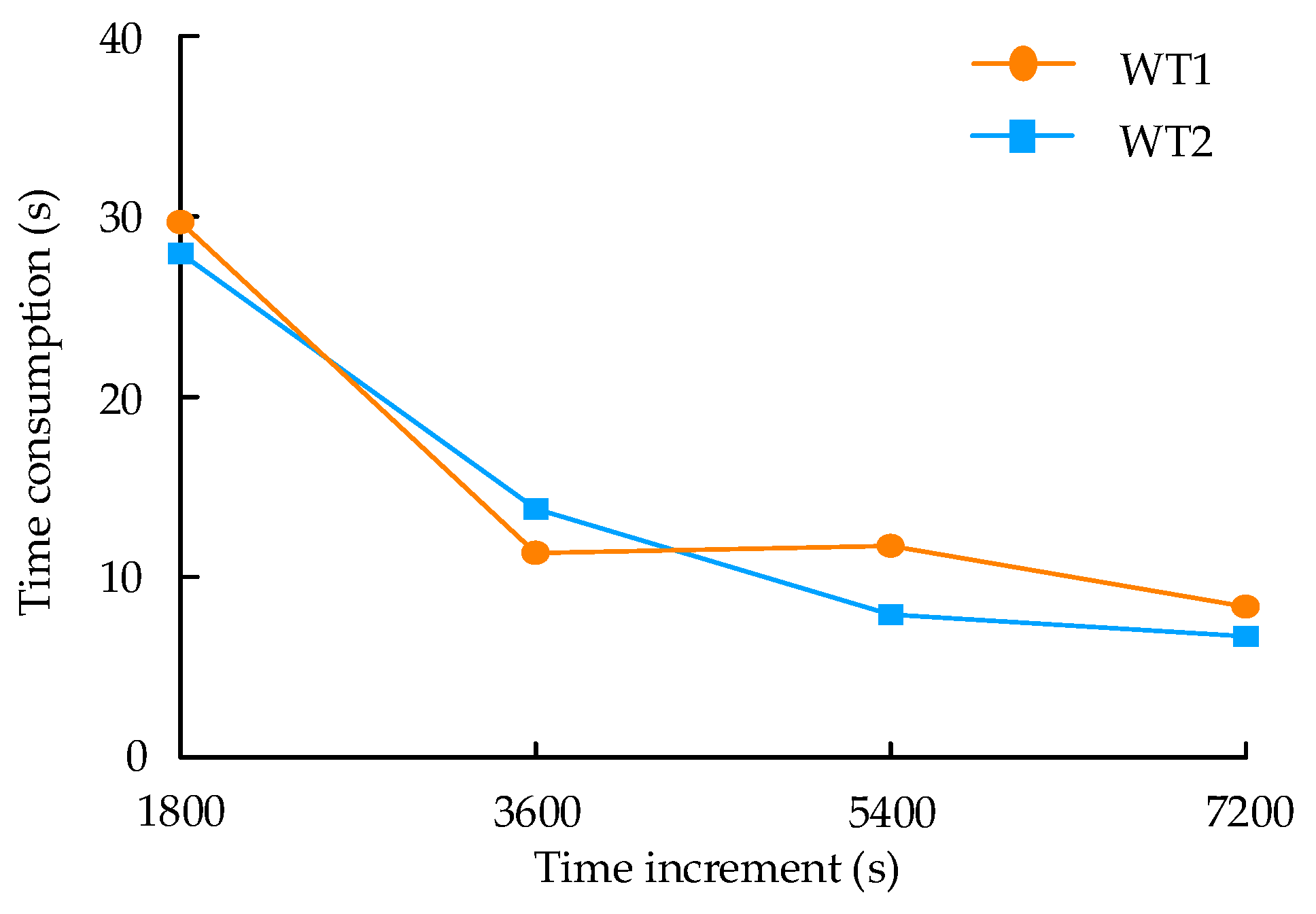
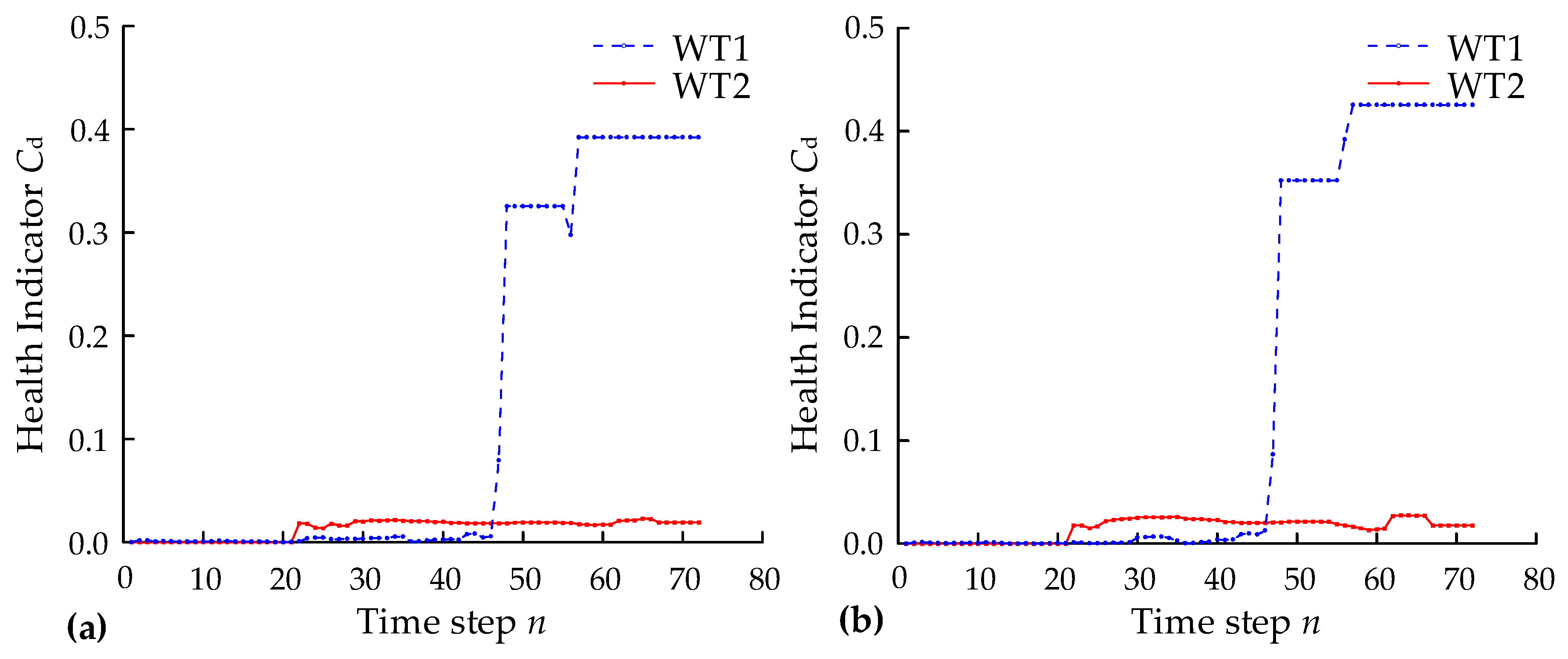
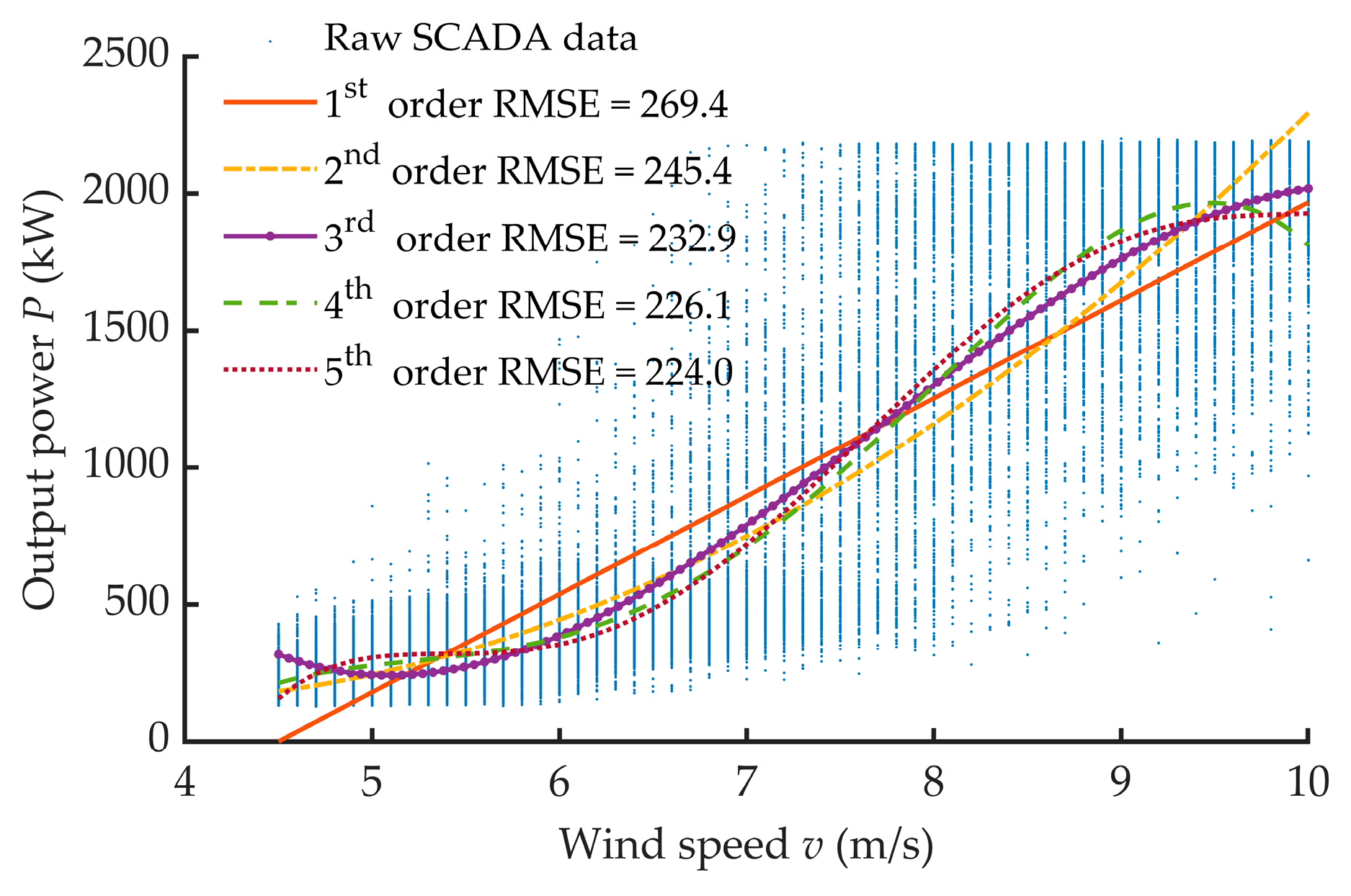
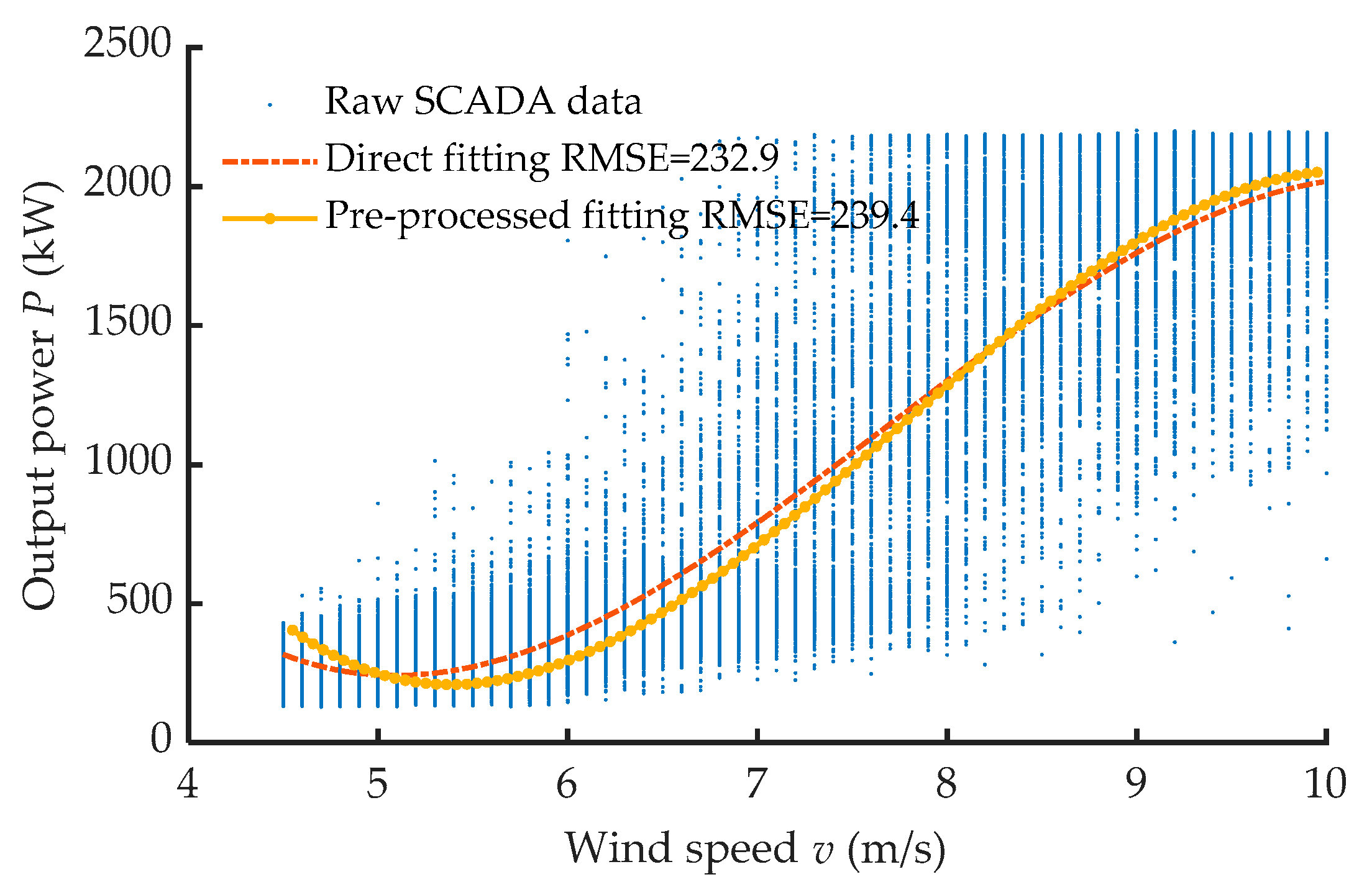
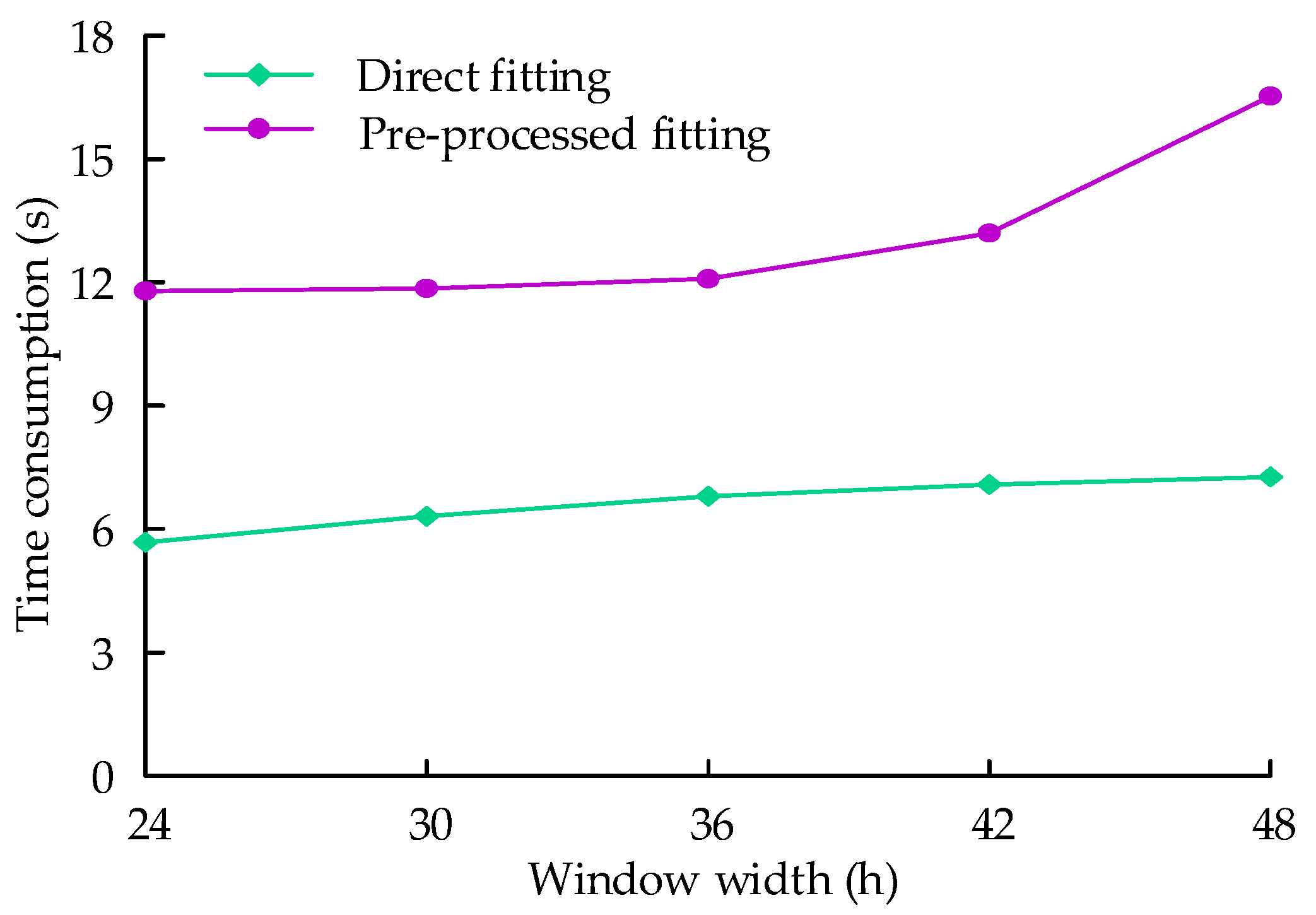
| No. | Time (hh:mm) | Wind Speed (m/s) | Rotor Speed (rpm) | … | Power (kW) |
|---|---|---|---|---|---|
| 1 | 14:20 | 5.9 | 12.82 | … | 434 |
| 2 | 14:20 | 6.0 | 12.72 | … | 432 |
| 3 | 14:20 | 6.1 | 12.72 | … | 435 |
| … | … | … | … | … | … |
| Parameter Name | Value | Parameter Name | Value |
|---|---|---|---|
| Rated power (kW) | 2000 | Cut-in wind speed (m/s) | 3.5 |
| Rotor diameter (m) | 82.6 | Rated wind speed (m/s) | 12 |
| Tower height (m) | 80 | Cut-out wind speed (m/s) | 25 |
| Rated rotor speed (rpm) | 17 | Maximum wind speed (m/s) | 70 |
| Blade weight (kg) | 6750 | Blade length (m) | 40 |
© 2020 by the authors. Licensee MDPI, Basel, Switzerland. This article is an open access article distributed under the terms and conditions of the Creative Commons Attribution (CC BY) license (http://creativecommons.org/licenses/by/4.0/).
Share and Cite
Zhang, F.; Wen, Z.; Liu, D.; Jiao, J.; Wan, H.; Zeng, B. Calculation and Analysis of Wind Turbine Health Monitoring Indicators Based on the Relationships with SCADA Data. Appl. Sci. 2020, 10, 410. https://doi.org/10.3390/app10010410
Zhang F, Wen Z, Liu D, Jiao J, Wan H, Zeng B. Calculation and Analysis of Wind Turbine Health Monitoring Indicators Based on the Relationships with SCADA Data. Applied Sciences. 2020; 10(1):410. https://doi.org/10.3390/app10010410
Chicago/Turabian StyleZhang, Fan, Zejun Wen, Deshun Liu, Jie Jiao, Hengzheng Wan, and Bing Zeng. 2020. "Calculation and Analysis of Wind Turbine Health Monitoring Indicators Based on the Relationships with SCADA Data" Applied Sciences 10, no. 1: 410. https://doi.org/10.3390/app10010410





